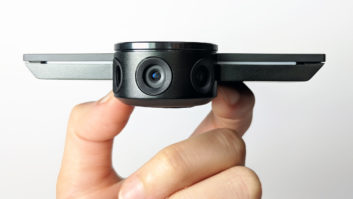
With 2017 almost over, it’s time to start looking to the future. Bobby Beckmann, CTO of Lifesize – an integrated cloud and HD video conferencing company – looks into his crystal ball to predict what the industry can expect in 2018
“Technology advancements ebb and flow within different industries, but I believe that with emerging technologies like AI, 4K and Machine Learning the collaboration space will be transformed in the next couple years,” Beckmann, who has more than 20 years of experience in product development. “Smart meetings will make the collaboration experience more engaging for users and provide IT professionals the advancements in business intelligence and data analytics to make their role across the company even more strategic.
I expect the following trends will have a big impact on enterprise conferencing and collaboration in the coming years:
4K Resolution – The conference room will become an even more critical part of conducting successful meetings with the help of highly sophisticated 4K cameras that showcase some of the best resolution the industry has seen. This technology has grown significantly in the home environment as seen in TVs and PCs, but as more millennials enter the workforce, the demand for high-quality video resolution (a.k.a. lifelike video) in the office will grow exponentially.
Machine Vision – With innovation driving installation of smarter cameras in the workplace, these “eyes in the office” will also gather important data to help give context to how a meeting is proceeding – much like sentiment analysis used for customer service calls. Typically, there is only one camera in a conference room and it doesn’t give a good indication of how the room truly looks or feels. For larger meetings, multiple cameras will utilize machine vision to help check the mood of the room: Are people engaged? Is there free-flowing conversation? Is someone sleeping? What is on the whiteboard? And then of course provide useful data to change meetings for the better.
Artificial Intelligence (AI)/Machine Learning – Cloud-based video conferencing solutions give us access to huge amounts of data about meeting habits. This data, aided by artificial intelligence and machine learning, could allow us to optimize the use of the platform and increase the effectiveness of meetings – many of the other trends (e.g. virtual assistants, facial recognition) are, in effect, powered by AI. At a basic level, AI could enable us to determine optimal meeting length, ideal number of participants, or best time of the day to hold a meeting to improve productivity. Voice recognition could analyze the content of meetings, compare against other meetings in the same organization, and make suggestions as to connections between people with complementary skills or knowledge.
Interoperability – While not as sexy of a trend as 4K resolution or machine vision, innovation around interoperability will be (as it has always been) paramount as users continue to demand a consumer-like experience with enterprise collaboration: whatever device, wherever they are, at any time. Applications and devices will need to play nicely with one another. Because of this trend, we will see additional consolidation and partnerships in the industry, as both big and small players try to build out an all-in-one solution that meets the demands of today’s modern worker.







